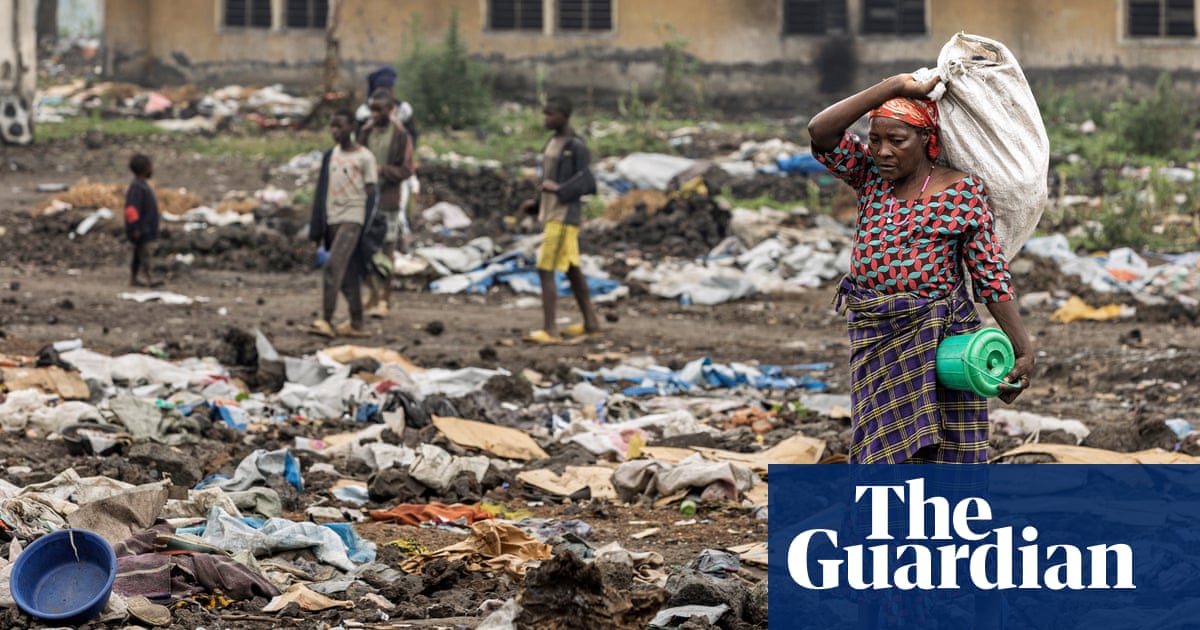
Teresa de Jesús Cen Requena is washing burgundy okra and a rainbow of freshly dug carrots at Mestiza de Indias, a regenerative agricultural project hidden down a dirt track in the jungle near the Maya village of Espita. “You used to be able to live from your milpa,” the farm worker says, referring to the traditional smallholding. “But now many people from the village go to Cancún because they want modern luxuries.
“You can’t buy a mobile phone with a bag of beans but I don’t care – I am connected to this land.”
At first glance, life appears largely unchanged over the centuries in this village on Mexico’s Yucatán peninsula. Women wearing huipiles (embroidered tunics) steam tamales (stuffed maize dough) over open fires in houses thatched with palm, chickens investigate the dust under a canopy of fruit trees, and men melt into the jungle with guns slung over their shoulders to hunt deer.

Teresa de Jesús Cen Requena, who works at the Mestiza de Indias regenerative farm, stands outside her home with her mother-in-law in their huipiles
However, instead of the traditional maize, their milpas (farms organised on a pre-Hispanic land system) are more likely to be sprouting a new crop: smouldering mounds of plastic. With the community no longer self-sufficient, those left in Espita have to rely on processed goods from the local supermarkets, and with no rubbish collection in this remote area of the Maya Forest – the second largest in Latin America – packaging, including the plastic, is often burned.
The exodus of people looking for work in the ever-expanding tourist resorts along the Riviera Maya has put milpa farm production under severe strain, and experts fear this could intensify when a new and controversial Maya train launches in December, doubling the number of tourists expected to visit the peninsula.
“It will prove very damaging when it comes to preserving the milpa tradition in the mid and long term,” says Dr Javier Orlando Mijangos Cortés, senior researcher at the Yucatan Scientific Research Center.
For the past eight years, however, Mestiza de Indias has been encouraging local people to reconnect with their land and milpa roots while also learning new agricultural methods.
The farm combines ancestral knowledge such as the “Three Sisters” companion planting method – beans act as a natural fertiliser, squash maintains soil humidity and keeps other plants low so the corn can absorb maximum light – with regenerative techniques designed to combat increasingly severe weather conditions.

Saturnino Vech Pech, 20, harvests some Rampicante heirloom squash at the farm. The project preserves Indigenous farming traditions and native crops, while also aiming to combat the harmful effects of Mexico’s agrochemical industry
The farm’s 220 hectares (540 acres), 80% of which remains jungle, supplies restaurants and hotels with speciality fruits, vegetables and herbs. “One of our main missions is to raise awareness about these ingredients among top chefs while giving local people access to organic produce,” says Gonzalo Samaranch Granados, a Spaniard who co-owns the farm with his wife, Martha Elena Chan Tuz, a Maya woman who was born in Espita.
“At the moment, many restaurants on the Riviera Maya use ingredients that have been flown from industrial farms in Puebla [900 miles away] because they can’t access locally grown produce – and often don’t know how to cook it anyway.”
Mestiza de Indias employs between six and 15 people, depending on the season, and they each receive a weekly box of fresh produce as part of their wages. Women are paid the same as men and the project covers medical bills for the team and their families.
As well as crop rotation, the milpa tradition is based on “graze, slash and burn”, which sees farmers routinely setting fire to part of their land to remove weeds before planting new seeds. Although this has been practised for generations, the food demands of a rising population often mean that leaving land fallow for extended periods is no longer an option.
“Although fire is part of the natural cycle, scientists have concerns about this process because when you burn soil you kill the microbes in it, and this is happening more and more frequently. As a result, many farmers have to turn to chemical pesticides to deal with pests, which poses a huge environmental risk,” says Rafael Mier, founder of Fundación Tortilla, an agricultural organisation that promotes knowledge about the environmental and cultural significance of corn in Mexico.

José Ignacio Canché Na and Saturnino Vech Pech mix bokashi compost, which breaks down waste through fermentation to enrich the soil
At Mestiza de Indias, the team favours environmentally friendly techniques to improve soil quality. Ash acts as a natural fertiliser, plants are allowed to go to seed and then replanted for next season so they are naturally more adapted to the harsh conditions, and Samaranch favours bokashi composting, which sees yeast and biochar break down organic matter in as little as 15 days.
With water becoming increasingly precious on the Yucatán peninsula, Samaranch has studied the Aztec system of chinampa, in which fertile raised beds were built on the lakes to cultivate food crops, and an ancient technique used to improve water retention, in which layers of charcoal are placed underneath the crops to act like a sponge.


A lifelong passion for sweet potatoes: Aurelio Batún Nahuat with a purple sweet potato, or camote morado. He has helped save many rare heritage varietals from extinction. Right, snow peas, also known as mangetout, or guisantes in Spanish, grown at the farm
Another of the project’s goals is to protect plants that are on the verge of disappearing; Samaranch has spent years hunting for particularly rare plants in back yards and milpas. This has radically changed the prospects of one local resident, Aurelio Batun Nahuat. At 68, his lifelong passion for growing sweet potato – 120 varieties at the last count – has finally found commercial success.
“Nobody was really interested in buying them until I met Gonzalo. Now he guarantees a certain amount of income and encourages me to plant even more unusual varieties,” he says, uncovering the purple insides of a particularly rare root with his machete.
Mier says: “Aside from their cultural and historical significance, native varieties are able to adapt to changing weather conditions because they have genetic diversity. Hybrid and GM crops have very narrow genetic information, which means if something affects one plant, it affects them all. A maize pandemic that could threaten food security on a global scale is a very real possibility.”

The farm’s founder, Gonzalo Samaranch Granados, with his wife and co-owner, Martha Elena Chan Tuz, prepare colourful pre-Hispanic dishes from their produce
Mestiza de Indias is just one of numerous projects aiming to preserve the Yucatán peninsula’s biodiversity, as well as the agricultural heritage of its Indigenous peoples, who live in greater density here than anywhere else in Mexico.
Maíz Criollo Kantunil, a group of farmers and agro-ecologists, has successfully reintroduced three varieties of native maize using seeds supplied by the International Maize and Wheat Improvement Center (CIMMYT). Aldea X-batun in Valladolid’s Zaciabil neighbourhood offers tourists the chance to cook alongside the Cen Canche family using produce grown from their milpa, while the menu at Merida’s Ramiro Cocina highlights native varieties on the brink of disappearing.
Back at Mestiza de Indias, farm worker María Alba de la Flor Pec has no doubt that working on the regenerative farm has become part of her way of life. “I love living off the land and now I’m learning to take care of the environment too. I often apply what I learn here to my own back yard,” she says.
Find more age of extinction coverage here, and follow biodiversity reporters Phoebe Weston and Patrick Greenfield on Twitter for all the latest news and features










 English (US)
English (US)